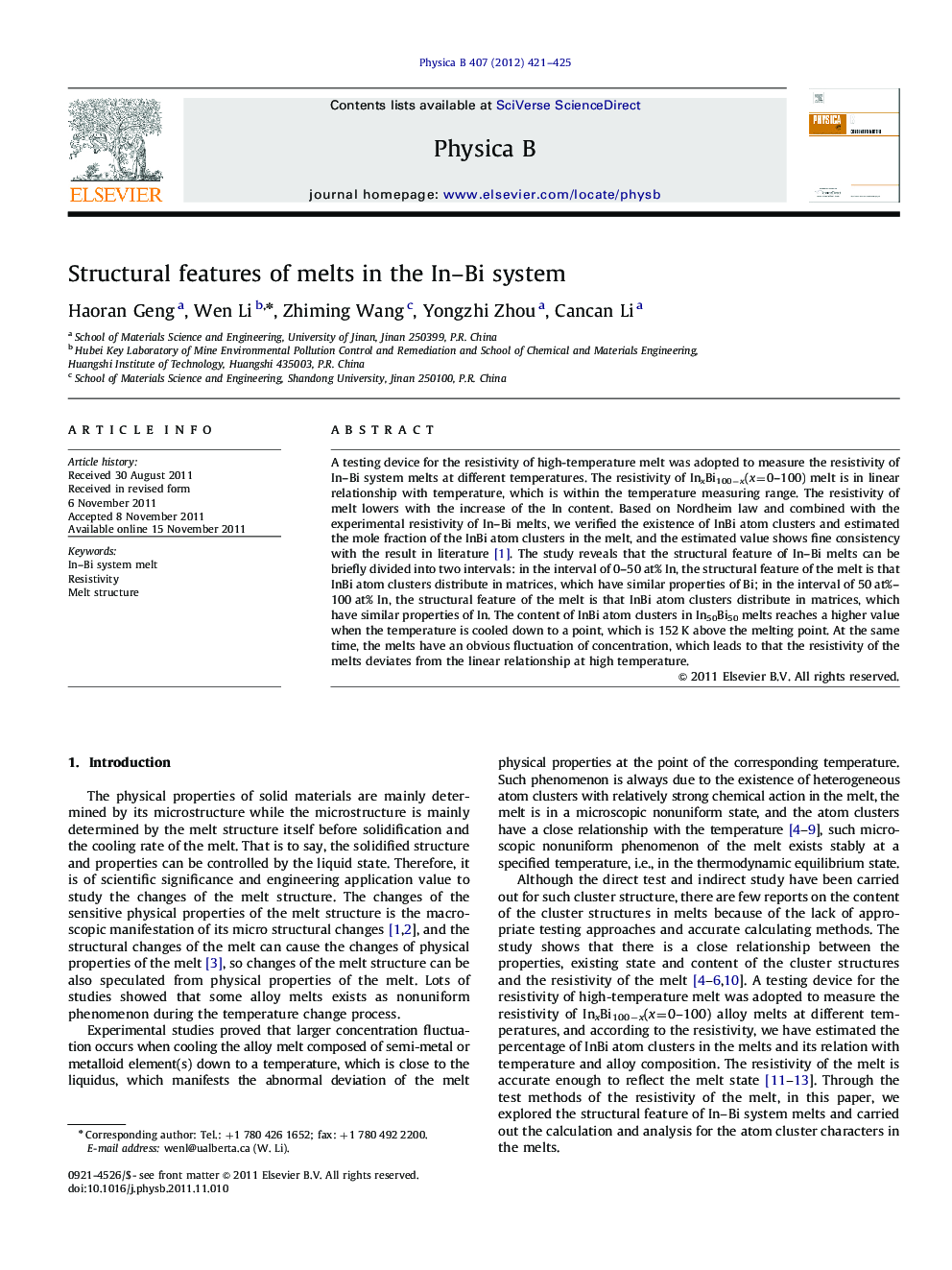| Article ID | Journal | Published Year | Pages | File Type |
|---|---|---|---|---|
| 1810840 | Physica B: Condensed Matter | 2012 | 5 Pages |
Abstract
A testing device for the resistivity of high-temperature melt was adopted to measure the resistivity of In-Bi system melts at different temperatures. The resistivity of InxBi100âx(x=0-100) melt is in linear relationship with temperature, which is within the temperature measuring range. The resistivity of melt lowers with the increase of the In content. Based on Nordheim law and combined with the experimental resistivity of In-Bi melts, we verified the existence of InBi atom clusters and estimated the mole fraction of the InBi atom clusters in the melt, and the estimated value shows fine consistency with the result in literature [1]. The study reveals that the structural feature of In-Bi melts can be briefly divided into two intervals: in the interval of 0-50Â at% In, the structural feature of the melt is that InBi atom clusters distribute in matrices, which have similar properties of Bi; in the interval of 50Â at%-100Â at% In, the structural feature of the melt is that InBi atom clusters distribute in matrices, which have similar properties of In. The content of InBi atom clusters in In50Bi50 melts reaches a higher value when the temperature is cooled down to a point, which is 152Â K above the melting point. At the same time, the melts have an obvious fluctuation of concentration, which leads to that the resistivity of the melts deviates from the linear relationship at high temperature.
Keywords
Related Topics
Physical Sciences and Engineering
Physics and Astronomy
Condensed Matter Physics
Authors
Haoran Geng, Wen Li, Zhiming Wang, Yongzhi Zhou, Cancan Li,
